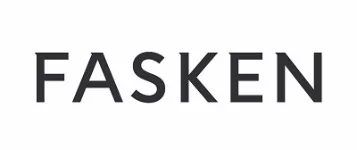- within Law Department Performance topic(s)
- with Senior Company Executives, HR and Finance and Tax Executives
- in Canada
- with readers working within the Banking & Credit, Business & Consumer Services and Healthcare industries
The Court of Québec recently handed down one of very few decisions addressing the display of trademarks, compliance with the Charter of the French Language (the "Charter"), and the Regulation respecting the language of commerce and business (the "Regulation").
Background
In Directeur des poursuites criminelles et pénales c. Gestion Hôtel Drummond inc., 2024 QCCQ 7639, the defendant, a Québec business operating a hotel chain under the "Times" banner, was found guilty of violating both the Charterand Regulation by displaying on the outside of its establishment the words "HOTEL" on one wall and "TiMES" on another wall. The company was fined $1,500.
Key Points of Decision
- Registered trademarks in both English and French: In any public signage and commercial advertising, a trademark may be in English only if no French version of the trademark has been registered.1 In this case, this exception could not apply to the defendant, since it was authorized to use both the registered trademark "TIMES HOTEL" (LMC1091666) and its French version, "TIMES HÔTEL" (LMC971667).
- Capital letters and French accents: Since the registered mark in French is "TIMES HÔTEL ," the defendant had to use it as is it appears on the register, including the accents. The defendant's argument that circumflex accents are not required on capital letters in French was not accepted by the Court.
- "Overall view" requirement: The Court specified that the words "HOTEL" and "TiMES" displayed on different walls do not satisfy the criterion of the overall view of the signage. In order to benefit from the exception allowing a trademark to be displayed in English only when there is a sufficient presence of French, the words must be visible at the same time in the same visual field.2 This means that the words must be legible together, at all times, without one being hidden or separated from the other.
- Acronym argument not accepted: The Court rejected the argument that "TIMES" was an acronym based on an artificial combination of letters, which would have enabled it to circumvent the French-language signage requirement.3 The defendant's proposed acrostic based on French words did not satisfy the Court, which noted that the acronym must have a clear meaning for users, not only managers.
Takeaways for Business Owners
Although case law is still relatively sparse regarding the application of signage and advertising rules set out in both the Charter and Regulation, the Gestion Hôtel Drummond decision and a few others handed down by the Court of Québec provide a glimpse of how the new provisions of Bill 96 will be implemented by the Office québécois de la langue française and the courts. These decisions allow us to avoid certain pitfalls and to identify best practices to follow:
- Check the registered versions of your trademarks: As of June 1, 2025, an English trademark can only be displayed on its own if there is no French version in the Canadian Intellectual Property Office (CIPO) trademark register.4
- Comply with the "same visual field" requirement: To benefit from the exception to display signage outside a building in English as long as there is a sufficient presence of French (note that as of June 1, 2025, the French text must also be markedly predominant), the elements must be visible at the same time in the same visual field.5
- Ensure French text is compliant: Although bilingual or English words are often used in French, their use may not be compliant with signage regulations.6 In Salon de quilles international, the Court ruled that the signs "Bowling" and "Salon de quilles" placed side by side were not compliant, as "bowling" was not a French word.7 Similarly, in Gestion Hôtel Drummond, the Court found that the word "Hotel" without a circumflex accent did not properly ensure a "sufficient presence" of French.
- Know the permitted exceptions: In Québec St-Germain Transport, the Court allowed the exclusive use of the English slogan "Coast to Coast Services," as it was the company's recognized trademark, but rejected the defendant's exception argument for "Class of 200_," which the Court did not consider a "heraldic motto."8
In Sum
The new provisions of the Charter introduced by Bill 96 came into effect on June 1, 2025, and many companies will have to adjust the signage they currently use. It is therefore crucial to take immediate steps to ensure compliance with the new language requirements.
Footnotes
1. Regulation respecting the language of commerce and business, s 25, para 4.
2. Regulation respecting the language of commerce and business, s 25.3, para 2.
3. Regulation respecting the language of commerce and business, s 26.
4. Charter of the French Language, s 51.1.
5. Regulation respecting the language of commerce and business, s 25.3, para 2.
6. Charter of the French Language, s 58.
7. Québec (Procureur général) c. Salon de quilles international inc., 2006 QCCQ 1903, paras 22–29.
8. Québec (Procureur général) c. St-Germain Transport (1994) inc., 2006 QCCQ 7631, paras 7–10.
The content of this article is intended to provide a general guide to the subject matter. Specialist advice should be sought about your specific circumstances.




